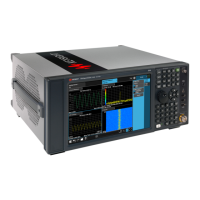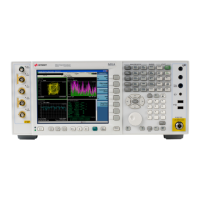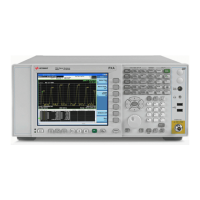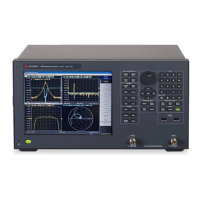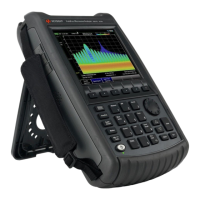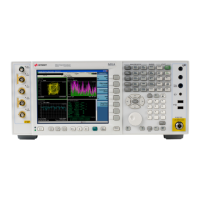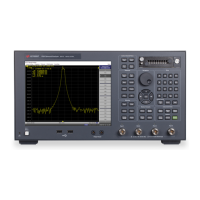Features and Functions 3
Keysight 34420A User’s Guide 103
System-Related Operations
This section gives information on topics such as reading memory, errors, self-test,
and front-panel display control. This information is not directly related to making
measurements but is an important part of operating the meter.
Reading Memory
The meter can store up to 1024 readings in internal memory. Readings are stored
in first-in-first-out (FIFO) order. The first reading returned is the first reading
stored. See also “To Use Reading Memory” on page 62.
– You can use reading memory with all functions, math operations, and also
reading hold. After you have enabled reading memory, you can change the
function or input channel. Be aware, however, that the function labels and
channel labels (V, OHM, etc.) are not stored with the reading.
– Readings taken while reading memory is enabled are stored in volatile
memory; the meter clears the stored readings when reading memory is turned
on again, when power has been off, after a self-test, or after a remote interface
reset.
– You can use reading memory with autotrigger, single trigger, external trigger,
and reading hold. If you configure the meter for multiple readings per trigger,
the specified number of readings are stored in memory each time a trigger is
received.
– Front-panel operation: enable readings storage under the 1: RDGS STORE
command in the SYStem menu. The ‘Mem’ annunciator lights in the display.
Recall the stored readings under the 2: SAVED RDGS command in the SYStem
menu. Press
(Menu Recall) after enabling reading memory to
quickly go to the Saved Readings command.
Reading memory is automatically turned off when you go to the “parameter”
level in the menu to recall the readings.
– Remote interface operation: The INITiate command uses reading memory to
store readings prior to a FETCh? command. You can query the number of
stored readings in memory by sending the DATA:POINts? command from the
remote interface.

